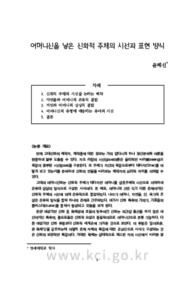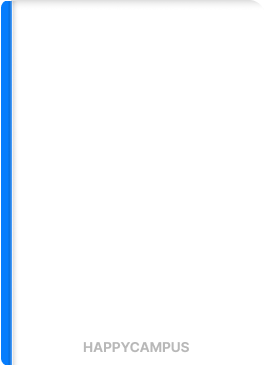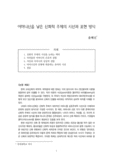

-
미리보기
서지정보
· 발행기관 : 한국구비문학회
· 수록지 정보 : 구비문학연구 / 37호 / 37 ~ 72페이지
· 저자명 : 윤혜신
초록
현재 고대신화의 제작자, 제작층에 대한 정보는 거의 없다시피 하나 정신분석학 이론을원용하여 일부 도출할 수 있다. 자크 라캉의 시선(gaze)이론은 물리적인 바라봄(seeing)과욕망이 결부된 시선(gaze)을 구분한다. 또 주체가 자신의 욕망으로부터 대타자(Other)를 어떻게 보고 있는지를 분석하여 신화의 인물을 바라보는 제작자의 심리적 위치를 이해할 수있다.
고대의 어머니신화는 신화적 주체가 대타자인 어머니를 상호주체적 시선으로 이해하여은유와 상상의 방식으로 구성한 서사이다. 한 예로, 어머니와 산은 각기 다른 존재이지만신화적 주체의 시선에 의해 은유적으로 통합되었다. 나아가 어머니, 자연물, 신, 국가적 조상은 은유적 방식을 통해 하나의 존재로 간주되었다. 여기서 신화 특유의 기의가, 기표들의클러스터(cluster)를 통해서 형성되고 있음을 보게 된다.
한편 여성거인 신화 중 육체성에 초점이 맞추어진 신화는 외견상 출산을 하지 않은 여신이지만 특유의, 풍요로움은 신화적 모성과 동질적이므로 어머니신으로 분류 가능하다. 다른 여성거인 신화 유형보다 신화적 세계관에 가까운 것으로 보인다. 이 유형은 ‘경이로운,큰 육체’만을 강조하는데 이렇게 존재 자체의 특징에 대한 관심만으로 서사가 구성되는 것은 신화의 보편적인 특징이다. 거대한 육체는 상대적으로 왜소한 자의 시선에서 바라본 결과로 인간이 모성을 크기로 상상했음을 뜻한다.
어머니신은 자기 완결적인, 완벽한 어머니, 주인공과 상보적 관계에 있는 어머니, 배우자의 팰러스를 희구하는 ‘결핍된 어머니’ 등으로 표현되었다. 이 어머니신들은 각각 신화적주체의 시선을 투사한다. 이 시선은 오이디푸스 콤플렉스(Oedipus complex)의 단계에서 어머니를 바라보는 유아의 시선에 대응한다. 라캉주의 맥락에서 웅녀는 오이디푸스 콤플렉스의 셋째 단계에 위치한 유아 시선의 국면을 보여주며 유화[주몽의 어머니로 여겨졌던 부여신도 해당됨]와 정견모주는 母子의 二者 관계적 시선을, 서술성모는 첫째 단계 유아의 시선을 보여준다.영어초록
Myths have been transmitted without determined authorship in Korea.
Mythic subjects who created myths in ancient Korea have not been known.
However, by the psychoanalyst Jacques Lacan’s theory, information of mythic subjects could be drawn from narratives’ expression and characters of myth,because expressions hold mythic subject’s desire and gaze.
In the level of psychoanalysis, mother is the Other who interprets a baby’s desire in its signals. As an infant desires mother, mythic subjects desired mother. In myth, the desire was expressed as ‘mother goddess’. Mother goddess as Other projects the gazes of mythic subjects.
At first, Korean mythic subject depicted a goddess as mother nor a spouse nor a maid. Later, goddess expressed as spouse and a maid.
Korean mother goddesses are mainly two types: goddess nature and female giant. Goddess nature is a deity who resides in natural beings like mountains,water, a bear and an imaginary animal like a combination of chicken and dragon. The other type is female giants. She was so big she could be laid her body between mountains and island.
Mother was regarded as a mountain, at the same time mother regarded as a divine being, a national ancestor of ancient kingdom. All these four different beings treated as ‘one being’ naturally and harmoniously. In this way, mythic signified was formed by layers of metaphor in ancient Korea.
The mythic way of combining all four beings is by metaphor and imagination.
For example, two different beings, that is, a mother and a mountain were merged into a being by metaphor. Motherhood of mother was transferred into mountain and then, mountain gained the new signified, a mother. Once metaphor is formed, mountain was regarded as a mother. Like this way, mother became a divine being, a national ancestor as well as a mountain.
Nationwide found female giant’s narrative has several types. Among the types,the depiction of huge female body is understood as a reflecting mythic world view because mythic subjects have more interests in the features of being itself comparatively. Meanwhile the other types of narrative seem afar from mythic era.
The productive motherhood was imagined into enormous volume by the mythic gaze. The motherhood is so great enough to be a giant. Even though the giant does not bear children, her body represented itself a signifier of productivity,creativity as like mother’s body. Therefore, her productivity could be easily connected to female giants’ creative works, such as formulation of mountain, water stream in the other female giant myth.
In light of the relationship with amain leading character, the characteristics of mother goddesses are various in Korean ancient myth. A type of self-sufficient goddess is self-regulating. She has no relation with spouse even when she bore children. A type of complementary goddess, aiding son’s mythic task. A goddess with lack asking phallus in Lacanian sense has not her own law or order.
The gaze of mythic subjects of ancient Korea, corresponds to child’s gaze who happened to see mother as Other in the developmental times of the Oedipus complex. The Korean mother goddesses can be analyzed in accordance with the gaze as below.
Ungnyeo[웅녀, 熊女] of proto-Chosun projects mythic subjects’ gaze at the third time of the Oedipus complex with symbolic father’s intervention.
Ungnyeo prayed for her pregnancy to male god Hwanung[환웅, 桓雄]. Yuhwa [유화, 柳花] of Koguryeo and Junggyeon-moju[정견모주, 正見母主] of Kaya project mythic subject’s gaze at the second time of Oedipus complex. The mother and child’s harmonious relationship is dramatized in the events of narrative while the male spouse gods, Haemosu[해모수, 解慕漱] and Ibiga[이비가, 夷毗訶] are situated behind the events. They are imaginary father at this time. Seosul-seongmo[서술성모, 西述聖母] of Silla projects mythic subjects’s gaze at the first time of Oedipus complex. The goddess bore child without spouse. Seosul-seongmo was an embodied figure of self-sufficient mother by child.
Female giants is self-sufficient, independent. She regulates her by her own law. This goddess has no lack which finds her Lacanian phallus from the other god or any other relations.
Goddess projects the gaze of mythic subjects. Korean mythic subjects experienced the times of Oedipus complex and bore Korean goddess with mythic imagination, mythic metaphor. The gaze moved from mother to spouse and the third person maid in Korean ancient myths. It means mythic subject’s psychological desires and gaze on mother moved and changed.참고자료
· 없음태그
- # 신화적 주체
- # 오이디푸스 콤플렉스
- # 여신
- # 한국 신화
- # 자연신
- # 여성거인
- # 웅녀
- # 유화
- # 부여신
- # 정견모주
- # 서술성모
- # 시선
- # 라캉주의
- # 모신
- # 신화적 상상
- # 신화적 은유.
- # mythic subjects
- # gaze
- # Korean Goddess
- # MOTHER GODDESS
- # Goddess Nature
- # female giants
- # Korean myth
- # Ungnyeo
- # yuhwa
- # Junggyeon-moju
- # Seosul-seongmo
- # oedipus complex
- # Mythic imagination
- # mythic metaphor.
-
자주묻는질문의 답변을 확인해 주세요

꼭 알아주세요
-
자료의 정보 및 내용의 진실성에 대하여 해피캠퍼스는 보증하지 않으며, 해당 정보 및 게시물 저작권과 기타 법적 책임은 자료 등록자에게 있습니다.
자료 및 게시물 내용의 불법적 이용, 무단 전재∙배포는 금지되어 있습니다.
저작권침해, 명예훼손 등 분쟁 요소 발견 시 고객센터의 저작권침해 신고센터를 이용해 주시기 바랍니다. -
해피캠퍼스는 구매자와 판매자 모두가 만족하는 서비스가 되도록 노력하고 있으며, 아래의 4가지 자료환불 조건을 꼭 확인해주시기 바랍니다.
파일오류 중복자료 저작권 없음 설명과 실제 내용 불일치 파일의 다운로드가 제대로 되지 않거나 파일형식에 맞는 프로그램으로 정상 작동하지 않는 경우 다른 자료와 70% 이상 내용이 일치하는 경우 (중복임을 확인할 수 있는 근거 필요함) 인터넷의 다른 사이트, 연구기관, 학교, 서적 등의 자료를 도용한 경우 자료의 설명과 실제 자료의 내용이 일치하지 않는 경우
“구비문학연구”의 다른 논문도 확인해 보세요!
-
김연수의 판소리 학습과 활동에 관하여 40 페이지
본고에서는 김연수의 학력, 판소리 학습과 판소리 활동을 중심으로 새로운 사실들을 밝혀 정리하고자 하였다. 그 동안 김연수가 서울로 유학하여 중동중학교를 졸업한 것으로 알려져 있었으나, 김연수의 친구였던 노희상의 증언을 찾아냄으로써 이것이 사실이 아님을 밝혔다. 김연수가 한문 공부를 한 것은 맞으나 신식 교육을 받은 바는 없는 것으로 확인된 것이다. 그렇다면.. -
동해안 남대 별신굿의 특징 연구 ‒ 안대 별신굿과의 비교를 중심으로 ‒ 46 페이지
본고는 동해안 남대 지역, 즉 울산, 부산 지역 별신굿의 특징을 밝히는 글이다. 강원도고성에서 경상남도 부산까지의 동해안에서 행해지는 굿을 통칭 ‘동해안굿’이라 부른다. 그런데 동해안굿도 그 세부 지역에 따라 지역적 차별화가 있다. 특히 가장 차별화 되던 곳이동해안 남부인 울산과 부산이었다. 이곳을 흔히 동해안 무당들은 ‘남대’라고 부른다. 하지만전승자들의.. -
가면극 속의 장애인들 52 페이지
이 논문은 가면극에 등장하는 장애인에 대한 본격적인 연구를 표방한다. 이를 위해 필자는 우선 가면극에 등장하는 장애인들의 외양, 움직임, 대사 등을 입체적으로 살피면서 그다양한 양상을 정리했다. 이 양상 정리에는 가면극의 통시적 변화의 측면 역시 염두에 두었다. 이러한 정리와 검토는 각각의 장애인을 형상화해 내는 어떤 논리 혹은 시선에 대한 추론으로 이어졌.. -
‘첫날밤 목 잘린 신랑과 누명 쓴 신부’유형 설화에 나타난 갈등 구조와 전승 체계 32 페이지
‘첫날밤 목 잘린 신랑과 누명 쓴 신부’ 유형 설화는 사회에서 부여한 질서에 벗어난 계모의 욕망이 한 가정을 해체에 이르게 한 서사이다. 이 유형 설화는 다른 유형의 계모설화와달리 전실아들의 죽음이 가계 단절로 이어져 가부장제의 위기가 표면화된 설화라는 점에서주목된다. 계모의 전실아들 살해는 자기소생에게 계승권을 넘겨주고자 하는 욕망에서 기인된 것으로 기존.. -
『빤짜딴뜨라(Pañcatantra)』의 전승과 교훈 ―도덕(dharma)과 현실(nīti) 사이에 선 삶을 가르치는 인도 고대.. 45 페이지
본 논문에서는 인도 고대의 우화집 『빤짜딴뜨라(Pancatantra)』의 세계문학사적 위치를소개하고, 이 작품의 인도 내 전승과정은 물론 그 전승과 연관된 인도의 문화적, 종교적 배경을 소개하여 인도문화사의 맥락 안에서『빤짜딴뜨라』의 내용과 형식의 이해가 가능하도록 설명을 제공함과 동시에 『빤짜딴뜨라』에 대한 연구사를 비판적이고 개괄적으로 소개한다. 이를 ..
찾으시던 자료가 아닌가요?
지금 보는 자료와 연관되어 있어요!
문서 초안을 생성해주는 EasyAI



